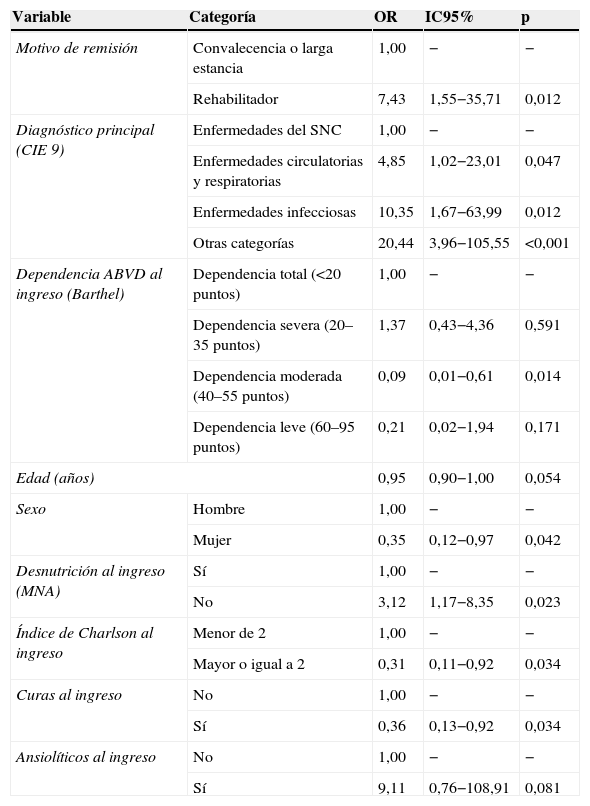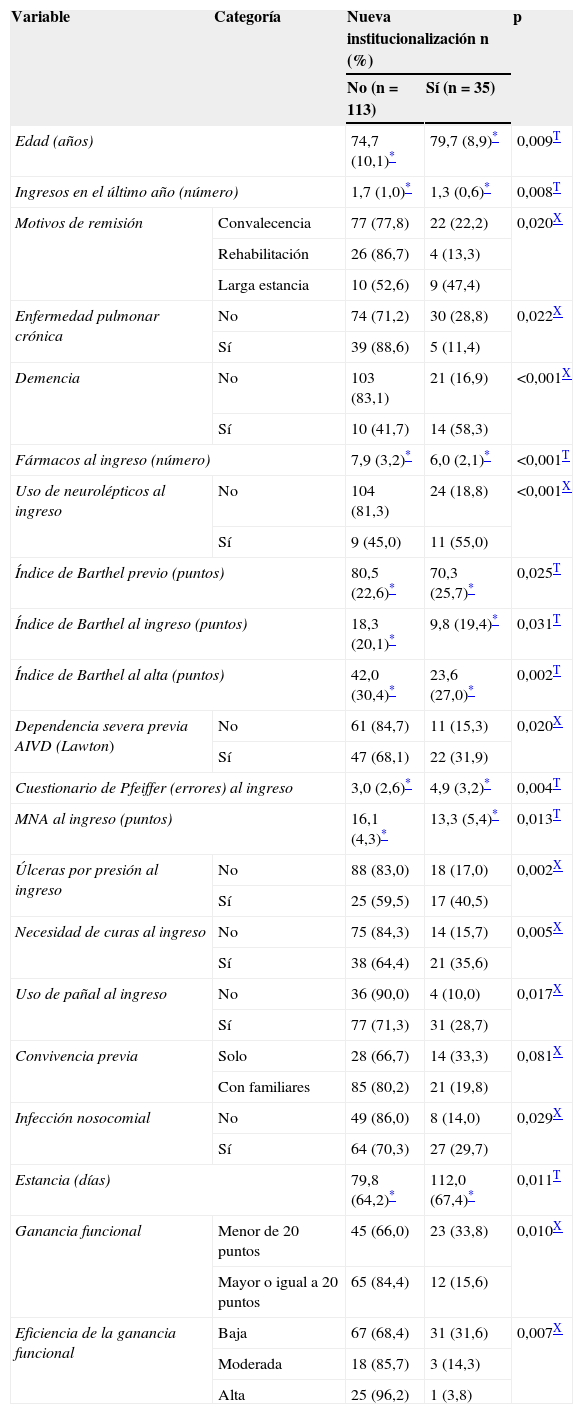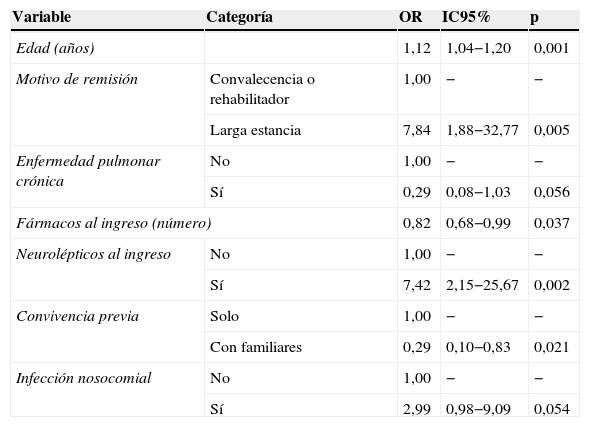Determinar qué factores se asocian con una ganancia funcional clínicamente relevante (GFCR) superior a 19 en el índice de Barthel y con nueva institucionalización al alta (NIA) en pacientes con intervención rehabilitadora.
Pacientes y métodoEstudio prospectivo en pacientes con intervención rehabilitadora ingresados entre 2000 y 2005 en una unidad de media-larga estancia. Se recogieron datos demográficos, biopsicosociales y de laboratorio.
ResultadosParticiparon en el estudio 153 pacientes para el primer objetivo y 148 para el segundo. Alcanzó una GFCR el 53,3% de los pacientes. La incidencia de NIA fue del 23,7%. En el análisis multivariante se relacionaron con una GFCR los siguientes factores: edad (OR: 0,95), sexo femenino (OR: 0,35), objetivo de remisión rehabilitador (OR: 7,43), diagnóstico principal infeccioso (OR: 10,35), dependencia moderada al ingreso (OR: 0,09), ausencia de desnutrición (OR: 3,12), alta comorbilidad (OR: 0,31), necesidad de curas al ingreso (OR: 0,36) y uso de ansiolíticos al ingreso (OR: 9,11). Asimismo, se relacionaron con NIA: edad (OR: 1,12), remisión para larga estancia (OR: 7,84), enfermedad pulmonar crónica (OR: 0,29), número de fármacos al ingreso (OR: 0,82), neurolépticos al ingreso (OR: 7,42), vivir con familiares (OR: 0,29) e infección nosocomial (OR: 2,99).
ConclusionesSe ha detectado un conjunto de variables asociadas a una GFCR y al riesgo de NIA, que podrían ser utilizadas tanto para optimizar los recursos rehabilitadores como para planificar la necesidad de un recurso residencial al alta.
To determine which factors are associated with a functional gain above 19 on Barthel's index (CSFG) and also factors associated with a new post-discharge institutionalisation (NPDI) in patients who a underwent rehabilitation intervention whilst admitted to a medium long term care unit.
Patients and methodsProspective study of patients admitted between 2000 and 2005 who underwent a rehabilitation intervention. Demographic, mind-body and laboratory data were collected.
Results153 patients were selected for the first aim and 148 for the second. 53.3% of the patients achieved a CSFG. The incidence of NPDI was of 23.7%. The following factors were associated with a CSFG in the multivariate analysis: age (OR: 0.95), female gender (OR: 0.35), rehabilitation objective at admission (OR: 7.43), infectious disease as primary diagnosis (OR: 10.35), mild dependence at admission (OR: 0.09), absence of malnutrition (OR: 3.12), high comorbidity (OR: 0.31), need of wound care (OR: 0.36) and ansiolitic intake at admission (OR: 9.11). Likewise, the following factors were associated with the occurrence of a NPDI: age (OR: 1.12), long-term care objective at admission (OR: 7.84), chronic lung disease (OR: 0.29), number of drug prescriptions at admission (OR: 0.82), neuroleptic intake at admission (OR: 7.42), living with relatives (OR: 0.29) and nosocomial infection during the hospital stay (OR: 2.99).
ConclusionsSeveral factors have been associated to CSFG and NPDI and they would be useful to optimise rehabilitation resources and to plan post-discharge institutional transfer.
Artículo
Diríjase desde aquí a la web de la >>>FESEMI<<< e inicie sesión mediante el formulario que se encuentra en la barra superior, pulsando sobre el candado.

Una vez autentificado, en la misma web de FESEMI, en el menú superior, elija la opción deseada.

>>>FESEMI<<<












